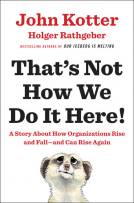
Reaganomics vs. the Modern Economy
The Conflict that Divides America
by Michael Douglas Gilbert
This title was previously available on NetGalley and is now archived.
Send NetGalley books directly to your Kindle or Kindle app
1
To read on a Kindle or Kindle app, please add kindle@netgalley.com as an approved email address to receive files in your Amazon account. Click here for step-by-step instructions.
2
Also find your Kindle email address within your Amazon account, and enter it here.
Pub Date Jan 10 2017 | Archive Date Apr 18 2017
Description
Reaganomics vs the Modern Economy defines the modern economy including the critical contributions of the public sector. It describes the history of political frustrations and resistance to government that led to Ronald Reagan’s election. We learn how market forces, not Reaganomics, ended stagflation in the 1980s. But confusion and Reagan’s personal popularity continue to produce unworkable policies. Michael Gilbert shows how we can reduce dissension and division in the country by implementing policies that meet the requirements of our modern economy. The failures of Reaganomics are our guide for what not to do.
A Note From the Publisher
After earning degrees in mathematics, Michael worked for decades as an exploration geophysicist on successful projects in North and South America. He retired in 2003 as the Chief Geophysicist for an independent oil company. Over the years, he has trained geophysicists and taught college and community college mathematics as well as federal income tax preparation. Since 2010, he has followed his life long interests to work exclusively on research and writing in economics and political economy.
Michael is an emeritus member of both the American Mathematical Society and the Mathematical Association of America. He is also a member of Beta Gamma Sigma, the national business honor society.
Available Editions
| EDITION | Paperback |
| ISBN | 9781634139816 |
| PRICE | $14.00 (USD) |
Featured Reviews
 Reviewer 331638
Reviewer 331638
Modern economy is different and more complex from primitive economy, says Michael Gilbert in his book “Reaganomics vs. the Modern Economy: The Conflict that divides America“. The defining characteristic of the modern economy is the ‘impossibility of true self-sufficiency.’ Today we cannot go out and supply ourselves with food, clothing and shelter. In order to survive, we need to buy our necessities with money from a store, to interact with the marketplace. This kind of economy does not bode well for the economic theory known as ‘Reaganomics’, a term used to describe the economic policies of President Ronald Reagan that promoted tax cuts, slashing of government spending and the deregulation of domestic markets.
The prevailing view is that the high oil prices stemming from OPEC’s cartel’s oil embargoes in the 1973 has caused the stagflation that inflicted so much damage to the US and world economy. But, Fed Chairman Arthur Burns argued in his book “The Anguish of Central Banking” in 1979 that the inflation appeared to be the result of a plethora of forces:
“the loose financing of the war in Vietnam, the devaluations of the dollar in 1971 and 1973, the worldwide economic boom of 1972-73, the crop failures and resulting surge in world food prices in 1974-75, and the extraordinary increases in oil prices and the sharp deceleration of productivity.”
Whatever the forces that caused the 1970s recession, the dominant view is that it was Reagan’s policies that ended it. Michael Gilbert does not agree with this view. The improvements in the American economy in the 1980s, he says, “has nothing to do with Reaganomics”. It was the market forces – a market correction that would take nearly ten years – that worked beautifully to end stagflation in the United States and the rest of the western world. In other words, Ronald Reagan was lucky and the misconception that somehow he turned the economy around has distorted US’s economic policy. Furthermore, it is responsible for the attack, shrink, shut down and underfund government.
Reaganomics continues to be a controversial issue. Ronald Reagan’s economic policy had 4 major objectives
To reduce government spending
To lower income tax
To reduce government regulation, and
To reduce inflation
In his first three years of his Presidency, Reagan chopped the top individual income tax rate from 50% to 28%, the bulk of which concentrated at the upper income levels. Reagan believed that tax relief for the rich would enable them to spend and invest more, stimulating the economy and therefore creating new jobs and more revenue for the federal government.
Reagan delivered on each of his four policy objectives, although not to the degree that was intended. The increased military spending, mainly due to his ambitious Strategic Defense Initiative (SDI) programme, dubbed “Star Wars”, plus the tax cuts, and the Congress’ refusal to make any deep cuts to the welfare state would cost the federal government trillions of dollars. Reagan’s failure to address the savings and loan problem led to an additional debt. At the end of his presidency the national debt had been tripled.
Reagan’s plans didn’t quite go as planned, but his policies helped to restore confidence in the American economy. Market and tax reforms, simplification of regulations, gave to the economy a new impetus that so badly needed. Simplification of regulations saved consumers billions of dollars. Furthermore, in the 1980s and the early half of the 1990s, a wave of political change swept over the world. Ronald Reagan, as Margaret Thatcher in the United Kingdom, followed this wave of change. Countries that embraced these changes were rewarded with improvements in the quality of life and unprecedented bursts of economic growth.
Michael Gilbert rightly argues that Ronald Reagan’s “government is the problem” strategy have been superficially used and often misapplied by the Republican Party. But he places great emphasis on the extremes of the debate “Government is the problem vs Government is good” to prove his point that government has an important role to play in modern economy.
Government is a vital institution. It isn’t perfect, but neither is the private sector. All markets fail to some degree. It is essential for government to take action when severe market failures are present. The better we make the government the better will perform its proper role in our modern economy.
Readers who liked this book also liked:
John Kotter; Holger Rathgeber
Business, Leadership, Finance, Nonfiction (Adult)





